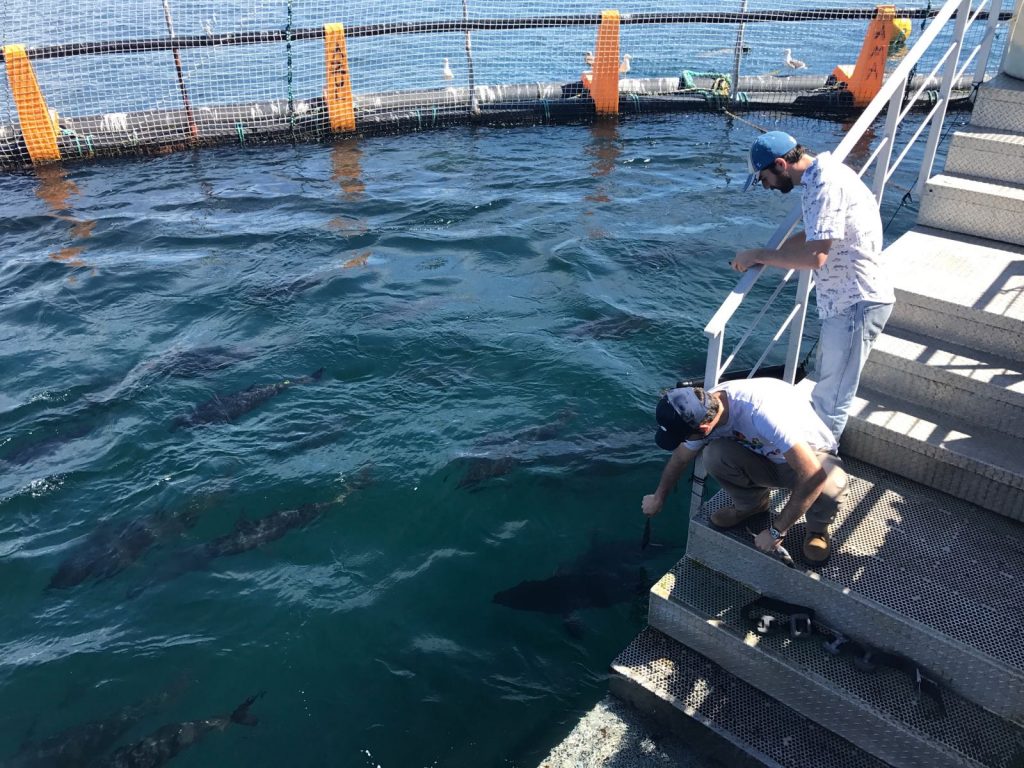
Industry players see rosy future for offshore fish farming
June 13, 2017
By Erich Luening
 For aquaculture to grow
For aquaculture to grow
The opportunities for offshore aquaculture are huge in America and around the world, but there are challenges in the way to tapping its full potential, according to speakers at the 7th Offshore Mariculture Conference held in Ensenada, Baja California, Mexico, in March.
They acknowledged that the bottom line is that the world will need more protein, and aquaculture plays a key role in answering that need. Shifting aquaculture offshore ticks all the right boxes in terms of efficiency and environment, they noted, but there are still barriers.
“Growth is going to come from aquaculture,” said Omar Alfi, managing director at Pacifico Aquaculture. “This business is a lot harder than we expected… It’s a game about quality and price, and constant production is critical.”
Robert Orr, CEO and managing director of Cuna Del Mar, said that for aquaculture to grow, the Norwegian model is the ideal, with its alignment between the private sector, government and academia. These sectors need to come together for that to become reality.
“There are massive opportunities for Mexico, and for the US and Canada if regulatory issues can be solved,” he said. He cited some figures illustrating how far China has gone in this direction, with 6,000 cages offshore already and a 200,000gt former tanker operating as a floating fish farm village. He noted that cobia alone has the potential to be 20 times the size of the salmon industry. “Access to finance and government policy are the two big challenges,” he said. “It’s not a 50,000-tonne issue – it’s a 50-million tonne issue.”
Offshore fish farming
In a session on “Offshore Aquaculture in the Americas,” Neil Sims, co-Founder and co-CEO of Kampachi Farms LC and founding president of the Ocean Stewards Institute, reflected that offshore mariculture is pushing the boundaries, literally. “The industry needs to show investors success and scale. Offshore aquaculture works — and works really well. It has improved performance, excellent parasite control and minimal environmental impact,” he said, adding that less stressed fish in better health are great for the bottom line.
It was also clear from the presentations that the market needs some education in terms of quality and responsible production. Buyers are still reluctant to accept that farmed fish is as good as wild-caught fish, even though it has much in its favor, including control over production, proper handling and is killed and processed properly.
Rex Ito, owner of Prime Time Seafood Inc, commented: “Logistics can make the difference between making and losing money.” He also said that handling can be the difference between a shelf life of weeks and just days. “Quality product and repeat performance is what we’re looking for.”
Victor Pak, CEO of JJWV Marketing Corporation, stressed that supply must be constant. There is no option to not supply. “If there’s a war, there’s a war. But you still have to supply that fish,” he said.





